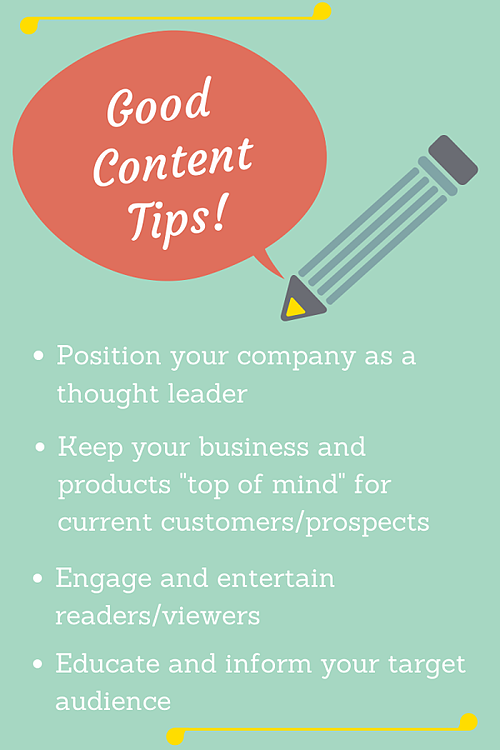The Importance of Balancing SEO and Engaging Copy in Your Content Marketing Strategy

 Whether you're a veteran Web marketer or a digital newbie, content marketing is crucial to your Internet marketing strategy. Thanks to changing consumer tastes and new search algorithms that reward compelling multimedia content, this concept is more powerful than ever. In fact, you can improve your business's reputation and boost its bottom line with a content promotion strategy that builds on its digital marketing campaign.
Whether you're a veteran Web marketer or a digital newbie, content marketing is crucial to your Internet marketing strategy. Thanks to changing consumer tastes and new search algorithms that reward compelling multimedia content, this concept is more powerful than ever. In fact, you can improve your business's reputation and boost its bottom line with a content promotion strategy that builds on its digital marketing campaign.
A Three-Pronged Strategy
First and foremost, you'll need to be clear on the components of a powerful content marketing strategy. The best digital marketing drives take a comprehensive approach that connects on-site and off-site content through digital channels like search engines, mobile apps, email marketing, social media and multimedia ads. This is known as an "integrated marketing strategy" in the marketing world.
Depending on your company's functions and audience, the quality content that you create on your website can take many different forms:
- Informative white papers
- Catchy infographics
- Relevant news feeds
- Interactive tools like forums and surveys
- Positive case studies and testimonials
- Internal blogs
Meanwhile, the off-site content that directly links to your main page or points users in your direction should include:
- Engaging podcasts and video blogs
- Regular email newsletters or articles
- Professional-looking press releases
- Informative webinars
- External blogs
Respect the Algorithms
To connect your on-website content with your off-website content more effectively, you'll need a powerful SEO operation. That requires respecting the all-important search algorithms that major engines like Google and Bing use.
In the early days of the Internet, search engines used imperfect metrics like keyword density and absolute site traffic figures to rank websites. As a result, savvy Web marketers could easily "game" their search results.
This isn't the case any longer. Thanks to some major algorithm upgrades, big-name search engines now reward sites that use original content and sit in "good" digital neighborhoods. They tend to feature low bounce rates and strong inbound and outbound connections to other well-regarded sites. More importantly, they encourage users to spend lots of time on-site and visit multiple pages within the domain.
Tell a Story
Of course, Internet users who find their way to your site aren't obligated to buy anything from your company. You need to make your prospective customers want to learn more about your business, and you can't rely on naked sales pitches and keyword-stuffed product descriptions for help.
Instead, your site's content should focus on compelling themes like your company's back story, the relationships that your team has built with previous clients, and the superiority of your firm's products and services. Use on-site infographics, informative videos, casual blog posts and convincing customer testimonials to drive these points home. Before you know it, you'll win the trust of new customers.
Connect the Dots
While your content promotion strategy can't possibly reach every Internet user in existence, it has the potential to reach more consumers than any old-fashioned marketing strategy ever could. To make this happen, you'll have to make plenty of "sticky" connections between your company's content and the rest of your online presence.
For instance, create engaging, "story-telling" search-optimized blog posts that link directly to your main website. Apply the same principle to a YouTube channel or podcast series that you regularly infuse with new video marketing content or visual tutorials. You can even use social media platforms like Facebook and Twitter to encourage your growing base of followers to download your firm's mobile app or view its latest webinar.
The Benefits of a Comprehensive Content Marketing Strategy
Your online marketing strategy needs to use high-quality, SEO-optimized content that respects the latest major search algorithm changes and draws users to your company's site. It should also engage users with exciting off-site multimedia content and connect closely with powerful social media platforms. Finally, it needs to be well-integrated into your overall digital advertising campaign. If it's set up properly, your strategy can boost your site traffic, increase your sales, and ultimately establish your firm as a leader in its field. If you can harness this inevitable momentum, your business will have nowhere to go but up.





